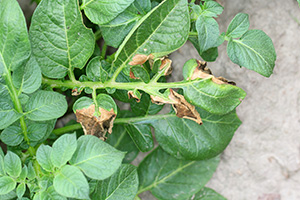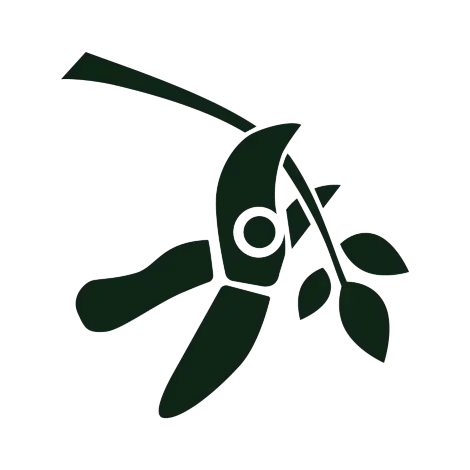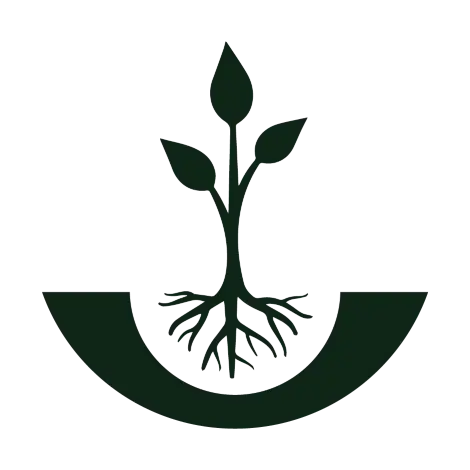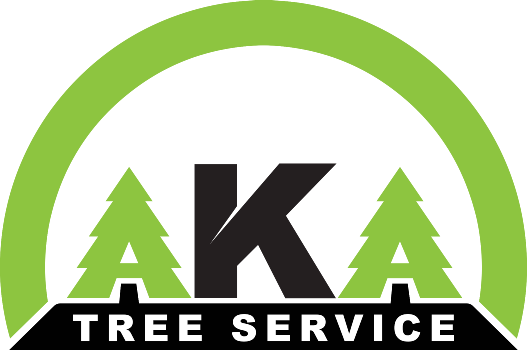
In the Southeast U.S., different seasons bring various tree diseases. Being aware of these can help homeowners take preventive measures and seek timely treatments. Successful tree care involves regular tree trimming and tree pruning. Additionally, you should be able to recognize signs of disease on your trees to keep them healthy and attractive. Some tree conditions can result in mild disfiguration while others can lead to tree death.
The following are common seasonal diseases that can affect your trees:
Common Tree Diseases in Spring
Spring is a time of renewal, but it also brings specific tree diseases that homeowners should be aware of to protect their trees and maintain a healthy landscape. Your local tree arborist in Atlanta, GA will tell you that wet spring weather creates a perfect environment for fungal diseases to develop on your trees.
- Brown Blossom Blight – This disease will kill flowers, twigs, and leaves on your tree. To prevent this, plant resistant tree varieties or give your tree preventative treatments like tree pruning in the early spring.
- Anthracnose – Another common tree disease seen in the spring is, which causes blighted leaves, leaf drop, and dead twigs. Diseases like anthracnose and leaf spot can make some of your tree’s leaves appear unsightly, but are not likely to cause significant harm to the tree. Tree arborists recommend cleaning up fallen leaves to prevent the disease from recurring next year as a more practical solution to spraying or treating the tree.
- Oak Leaf Blister – A common springtime disease affecting oak trees. Caused by the fungus Taphrina caerulescens, it leads to raised, blister-like swellings on the leaves. These blisters can distort leaves and cause them to drop prematurely. To manage this disease, it’s essential to remove infected leaves and consider fungicidal treatments if the problem is severe.
- Oak Wilt – One of the more severe diseases that affect trees, oak wilt is a systemic fungal condition that can kill infected plants. Oak wilt can affect many tree species and is spread by beetles and infected grafts. Early symptoms include premature defoliation, rapid leaf discoloration, and yellowed leaf veins. Some tree species respond to treatments, but those in the red oak family do not. As a preventative measure, inject susceptible trees with a systemic fungicide during the growing season.
- Apple Scab – An early-season leaf disease that affects crabapple trees, apple scab shows up in the form of scab-like lesions on leaves. This condition is mostly an aesthetic problem, but can also lead to premature defoliation in affected trees. Tree care for plants infected with apple scab should begin with fungicidal treatments.
Common Tree Diseases in Summer
Summer’s warmth and humidity create ideal conditions for various tree diseases. Homeowners need to tailor their warm weather tree care to prevent these specific seasonal ailments. You should be vigilant of the following diseases to maintain the health and vitality of your trees:
- Chlorosis – Chlorosis is a condition where leaves produce an insufficient amount of chlorophyll, turning them yellow while the veins remain green. It’s typically caused by poor soil conditions, such as high pH levels or nutrient deficiencies. To combat Chlorosis, soil testing and appropriate fertilization are recommended to restore the tree’s health.
- Powdery Mildew – The result of a number of fungal pathogens, powdery mildew grows on the surface of affected plants, and can be found on a broad range of trees in North America. Powdery mildew can cause leaves, flowers, and shoots to grow abnormally, and can stunt the growth of young trees. To prevent this disease, select fungus-resistant tree varieties and avoid planting in shady or crowded areas.
- Lethal Yellow of Palm – Typically affecting palms in Florida and Texas, lethal yellow of palm is caused by phytoplasma transmitted by planthopper insects. Symptoms include premature fruit dropping, yellowing foliage, and flower death. Left untreated, an infected palm will usually die within five months. Using insecticides to prevent transmission of lethal yellow of palm is an effective prevention method, and infected trees sometimes respond to antibiotic injections.
Common Tree Diseases in Fall
As trees prepare for winter, fall is a critical time for identifying and managing diseases to ensure trees remain healthy through the colder months.
- Heterobasidion Root Disease – This disease produces fruiting bodies called conks at the base of living or dead trees or stumps. These conks are often hidden below the layer of leaf litter around the base of the tree and are most common during cooler, wetter months.
- Southern Cone Rust – This disease affects various species of oak, which serve as alternate hosts. New conelets on trees are infected by spores from the leaves of evergreen oaks, such as live oak and low-growing runner oaks. The disease becomes noticeable on the new conelets shortly after pollination.
- Hispidus Canker Decay – This tree disease causes cankers, which can stretch several feet long and have uneven, partially healed edges. At the top of these cankers, you might find dark, soft mushroom-like growths called sporophores. These sporophores often fall to the ground and can remain there for several months. Unfortunately, there is no known cure or way to control it. Since dead branches can provide entry points for the fungus, proper pruning of the trees is essential. Regular fertilization every three to five years and watering during droughts can also help.
Common Tree Diseases in Winter
Winter may seem like a dormant period, but certain tree diseases can still pose a threat. Homeowners like you should plan out winter tree care and stay alert to protect their trees during this season.
- Black Knot – This is a fungal disease that primarily affects cherry and plum trees. It manifests as hard, black swellings on branches and twigs. These knots can girdle branches, cutting off nutrients and leading to dieback. Pruning infected branches during the dormant season and applying fungicides can help control the spread of Black Knot.
- Annosus Root Rot – Annosus root rot is a serious tree disease that affects southern pines and other common tree species. In this video, you will learn all about the signs and symptoms of annosus root rot. When a tree is affected by annosus root rot, its roots may start to develop a dangerous fungus.
Answering Common Questions About Tree Diseases
For optimal tree care, it’s a good idea to work with a reliable tree company with experience in the Southeast U.S. They can help you determine whether your tree is diseased, which is important to know if you want to keep your family and property safe. When it turns out that your tree is suffering from a significant disease, you should know how to handle it. Keep reading for the answers to some questions about tree diseases.
Sometimes it’s obvious when a tree is dying or diseased, but in other cases, the symptoms are relatively subtle. For example, you probably won’t think anything of trees that lose their leaves during the fall. When this happens too early in the year, however, it could be a sign that you need the help of a tree service. You might also notice visible damage to the trunk of the tree, even though there is no apparent reason for the damage to exist. This could also represent tree pests or diseases.
You might want to consider tree removal if yours appear to be diseased, and not just because disease can take away from their aesthetic appeal. Diseased trees are weaker than their healthy counterparts, and this means it’s easier for them to lose branches or even fall over entirely. Even small branches can cause damage and injury if they fall a far enough distance.
And if one of your trees is diseased, it can pass onto other healthy trees. To prevent any spread, it may be in your best interest to consider tree removal.
Whether you decide that you need tree removal or you want a second opinion, don’t hesitate to talk to the specialists. If your arborist comes over and determines that the tree is fine, you get to enjoy your peace of mind. If you need removal, you can set up an appointment and get the process started.
Ensure Your Trees Remain Healthy Year-Round
If you notice fungus growing from the roots of your tree, or wilting and discoloration in one area of the tree, call your local tree service. These signs can be symptoms of more serious diseases that can affect your trees.
When it comes to tree care, disease prevention is critical. Contact our expert team for a professional assessment and effective treatment solutions. Your trees will thank you!
Common Southeast Tree Diseases by Season in Central GA
Also Serving Nashville TN
Barrow County | Cherokee County | Cobb County | Coweta County | Dawson County | DeKalb County | Douglas County | Fayette County | Forsyth County | Fulton County | Gwinnett County | Hall County | Henry County | Jackson County | Newton County | Oconee County | Rockdale County | Spalding County | Walton County
Davidson County | Rutherford County | Williamson County | Wilson County
Home » Common Southeast Tree Diseases by Season



